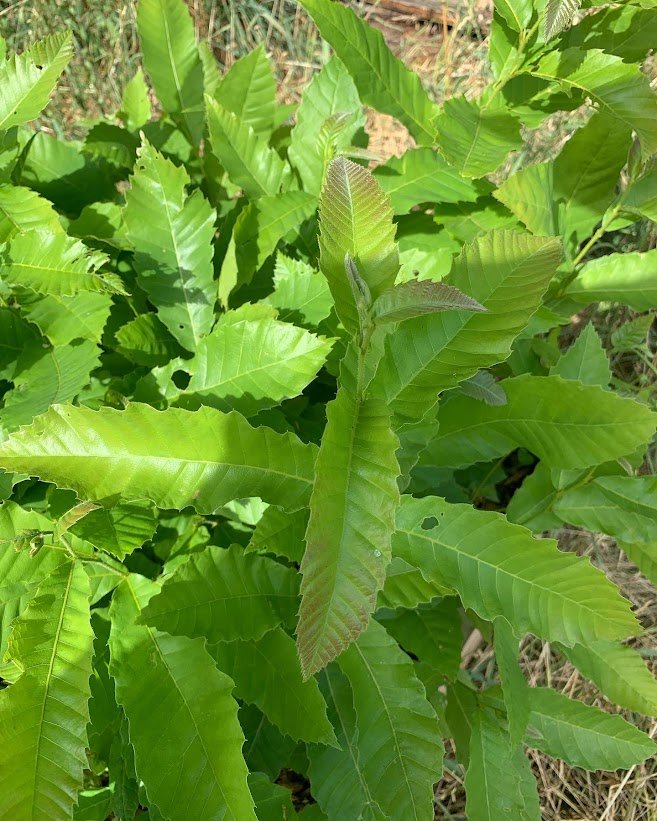Chinese Chestnut - Bare Root Tree
Bare Root Tree
(Castanea mollissima)
The story of the American Chestnut is an amazing, at times depressing, but also hopeful tale. Once making up a large percentage of hardwood trees and littering the forest floor with edible nuts, blight has decimated the population resulting in only isolated American Chestnuts left. However through the work of individuals, small nurseries, and the American Chestnut Foundation, hybrid American and Chinese chestnuts now exist that retain qualities of both and remain blight resistant.
We collect our chestnut seed from a stand of 20 year old trees in neighboring Hiram that produce a reliable crop each year. We expect these trees to produce nuts usually within the first 7 years of growth, very fast for a nut tree.
Hardiness: Zone 4-8
Soil: Acidic, Clay, Loamy, Moist, Sandy, Well Drained, Drier side
Light: Full Sun
Notes: Should be planted in pairs or groups to ensure pollination.
Bare Root Tree
(Castanea mollissima)
The story of the American Chestnut is an amazing, at times depressing, but also hopeful tale. Once making up a large percentage of hardwood trees and littering the forest floor with edible nuts, blight has decimated the population resulting in only isolated American Chestnuts left. However through the work of individuals, small nurseries, and the American Chestnut Foundation, hybrid American and Chinese chestnuts now exist that retain qualities of both and remain blight resistant.
We collect our chestnut seed from a stand of 20 year old trees in neighboring Hiram that produce a reliable crop each year. We expect these trees to produce nuts usually within the first 7 years of growth, very fast for a nut tree.
Hardiness: Zone 4-8
Soil: Acidic, Clay, Loamy, Moist, Sandy, Well Drained, Drier side
Light: Full Sun
Notes: Should be planted in pairs or groups to ensure pollination.
Bare Root Tree
(Castanea mollissima)
The story of the American Chestnut is an amazing, at times depressing, but also hopeful tale. Once making up a large percentage of hardwood trees and littering the forest floor with edible nuts, blight has decimated the population resulting in only isolated American Chestnuts left. However through the work of individuals, small nurseries, and the American Chestnut Foundation, hybrid American and Chinese chestnuts now exist that retain qualities of both and remain blight resistant.
We collect our chestnut seed from a stand of 20 year old trees in neighboring Hiram that produce a reliable crop each year. We expect these trees to produce nuts usually within the first 7 years of growth, very fast for a nut tree.
Hardiness: Zone 4-8
Soil: Acidic, Clay, Loamy, Moist, Sandy, Well Drained, Drier side
Light: Full Sun
Notes: Should be planted in pairs or groups to ensure pollination.



